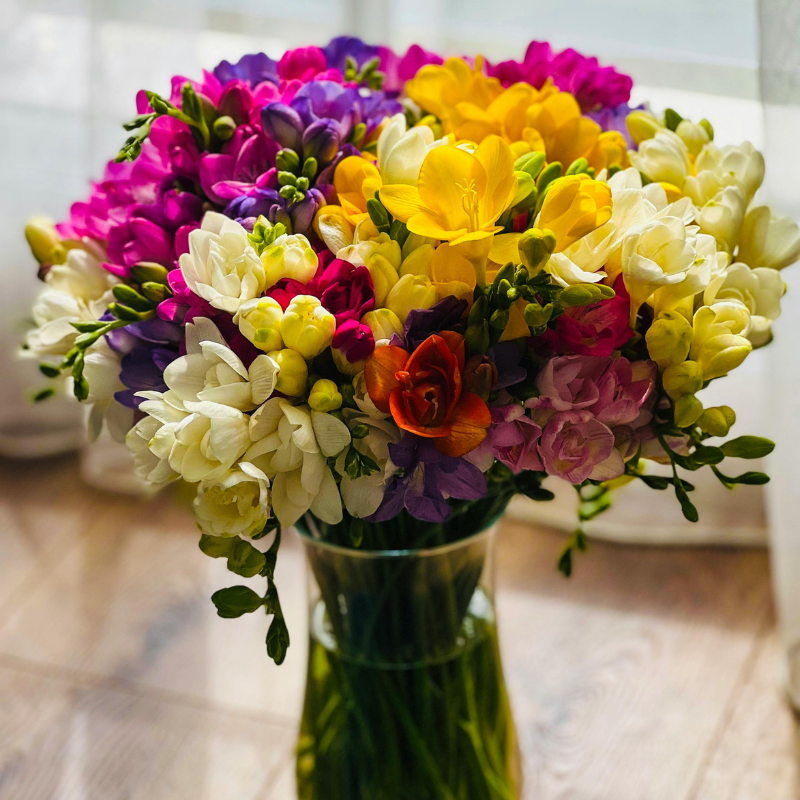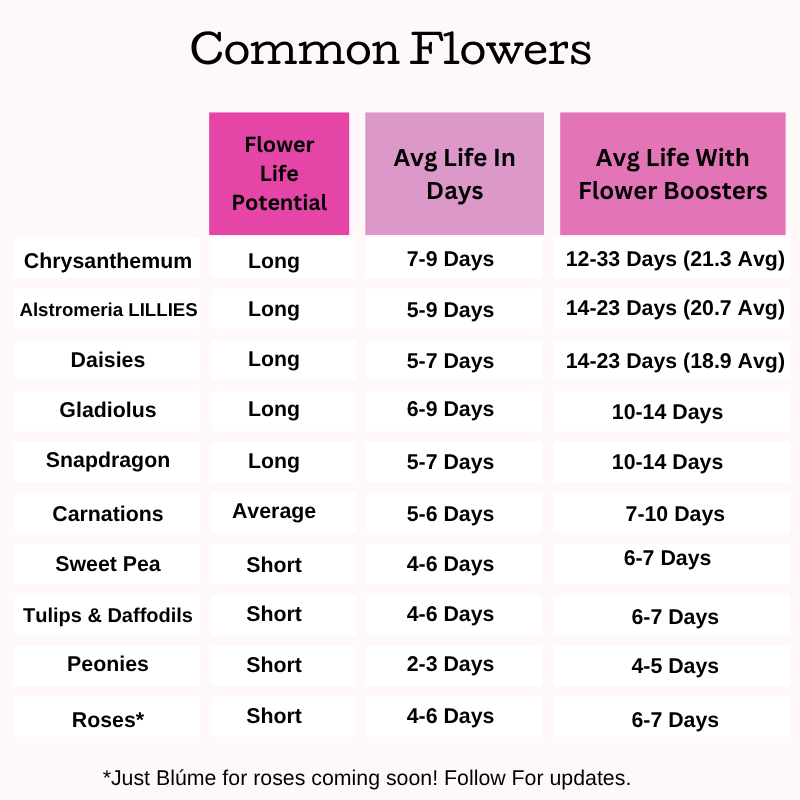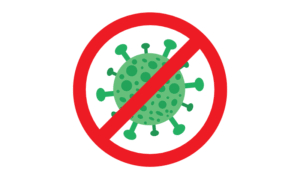Cut Flower Food: Ingredients, Benefits & How It Works (Complete Cut Flower Food Guide)

What’s Really Inside Cut Flower Food? An Honest Breakdown of Ingredients (and Why It Matters)
Cut flower food has one job: keep your stems alive as long as possible.
And despite the mystery around “proprietary formulas,” most cut flower food is actually built on the same three basic components:
Energy (Sugar)
Acidifier (pH balance)
Bacteria Control (Preservative)
That’s it.
Three simple ingredients — with a massive amount of variation in quality, safety, and effectiveness.
And that variation is exactly why two bouquets cared for the same way can have totally different lifespans.
Let’s break each ingredient down (simply, clearly, and factually), and then look at what you can do to help flowers thrive longer — without mystery chemicals, bleach, or industrial-grade additives.
1. Energy = Sugar
Flowers may be cut, but the biology is still alive.
Stems and petals need carbohydrates to fuel:
water uptake
cell repair
petal formation
internal pressure needed to stay upright
Most companies use the cheapest sugar possible — often industrial-grade sugar that contains impurities and is not safe for human consumption. And delivers inconsistent results.
At Flower Boosters, we take a different approach:
Human-grade fine granulated sugar
Dissolves quickly
Absorbs faster through the stem
Leaves no residue
Safe around children, pets, and drains
If you’ve ever noticed it sometimes feels like those “free packets” do nothing at all, that could absolutely be the sugar quality.
2. pH Balancer = Acid Reducer
Not all water is created equal.
Some tap water is slightly acidic.
Some is slightly alkaline.
Some contains minerals that mess with pH entirely.
Cut flowers prefer a very specific pH range — a slightly acidic environment that improves water uptake and slows bacterial growth.
Most cut flower food includes an acidifier (usually citric acid) to control this.
But as with sugar, citric acid comes in dramatically different grades, from food-safe to industrial-use only.
We only use high-quality food-grade acidifiers, so you know exactly what’s going into your vase, around your home, and into your water system.
This is why we also recommend filtered water — it gives the formula a cleaner starting point and you more consistent results!
3. Bacteria Control = Preservative
From the moment flowers are cut, decay begins.
Bacteria forms quickly in vase water, clogging stems and blocking hydration.
Most mass-market cut flower food packets use:
bleach derivatives,
industrial-grade disinfectants,
or quaternary ammonium compounds (quats)
These work — but they’re harsh, toxic if ingested, irritating to the skin, and unsafe around curious pets.
Flower Boosters uses a very different approach:
Food-grade preservatives
The same ones used in breads and beverages
Safe, gentle, effective, non-bleach
Better for indoor use and the environment
You get results without breathing bleach fumes or worrying about accidental exposure.
4. What Else Helps Cut Flowers Thrive? (Our Unique Add-Ons)
Here’s where Flower Boosters stands out: we went beyond the basic three ingredients and built a formula using real food-grade components that support hydration, vitality, and longevity.
Caffeine (Yes, Really.)
Independent laboratory research shows that small amounts of caffeine can support plant activity and improve water uptake in living plants.
We tested a caffeine-based blend inspired by this peer-reviewed study, and the results outperformed anything those free mystery packets can do:
https://www.sciencedirect.com/science/article/abs/pii/S030881461930010X
Specialty Sugars for Faster Hydration
Not all sugars behave the same.
We use a blend that enhances:
water movement through the stem
tissue firmness
petal fullness
Still 100% food-grade — just optimized for performance.
Boosting Flower Vitality: Vitamins & Minerals
Just like humans take supplements, we include real nutrients to help flowers maintain cellular structure as long as possible.
These are all safe, food-grade components, not industrial additives.
Real-food, transparent ingredients
No bleach.
No silver nitrate.
No unlabeled “proprietary mixes.”
No industrial shortcuts.
Just clear, safe, effective flower care you can trust around children, pets, and the environment.
You get the best of both worlds:
longer vase life + peace of mind.
How Much Longer Can Flowers Live?
That’s still up to nature.
Some flowers simply have shorter lifespans.
Others are naturally long-lasting but often sold past their peak.
The chart below highlights the average lifespan of the most common cut flowers so you can choose varieties that give you the most value for your budget — and the best results with Flower Boosters.

Further Reading for Longer-Lasting Flowers
Here are helpful, science-backed guides to take your flower care even further:
• Why Do Flowers Wilt So Fast?
Understand the hidden reasons behind early wilting and what you can do to prevent it.
• How to Keep Flowers Fresh in a Vase
A practical guide to selecting, trimming, and caring for fresh flowers the right way.
• Best Water for Cut Flowers: Filtered vs Tap
Why water quality matters — and how to choose the best water for your bouquet.
• Are Cut Flowers GMO?
A myth-busting look at flower biology, farming practices, and consumer misconceptions.
• Sugar in Flower Water: Does It Really Work?
Explore the science behind sugar, hydration, and stem uptake.



